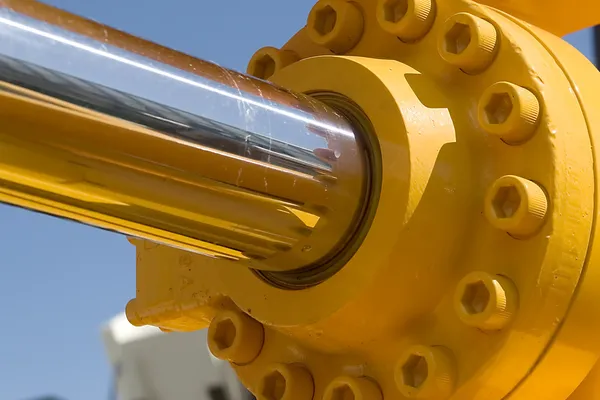What are the two main types of hydraulic systems?
Posted on March 30th, 2022
Hydraulics is one of those mechanics found in equipment you use daily. You know all there is to know about it, but you only see them in large machinery such as rail calibration, installation, and maintenance. Pumps, lifts, brakes are also other applications of hydraulic engineering systems.
What Are Hydraulic Machines?
Hydraulic machines transfer hydraulic energy to mechanical and mechanical energy to hydraulic power. Turbines are hydraulic devices that convert hydraulic energy into mechanical energy, whereas pumps are hydraulic machines that convert mechanical energy into hydraulic energy.
A hydraulic system transfers incompressible hydraulic fluids from one component to another via tubes/pipes to generate energy. Hydraulic systems have several advantages over electric and pneumatic systems. Hydraulic systems offer a variety of benefits, including reduced system noise, increased machine uptime, pump backup availability, and high-pressure operations.
Hydraulics is a vast subject with several applications in modern society. It has several essential components such as o rings and seals, valves, fuses, accumulators etc.
Two Types of Hydraulic Systems
If you work with hydraulic systems long enough, you’ll come across the terms “open-loop” and “closed-loop.” These words relate to two different types of hydraulic circuits currently in use. Each of these systems has its own set of strengths and weaknesses, which is why they’re utilised in various industrial applications. Understanding the differences between these ideas is critical for properly maintaining your equipment with o rings and seals and making smarter decisions when constructing or updating your hydraulic systems.
What is a Closed-Loop Hydraulic Circuit?
Closed-loop hydraulic systems, sometimes known as ‘hydrostatic drives,’ are a type of hydraulic system that may be found on mobile equipment like skid steer loaders and dozers and industrial machinery like conveyors.
The fluid goes straight from a piston pump to a motor and back without passing through a reservoir in a hydrostatic drive. The fluid’s speed and direction control the motor, and because this is a simple closed loop, the system can function either way.
This sort of system has a displacement controller (control lever) attached to the piston pump’s swashplate to adjust speed and direction. The pump’s swashplate angle is set to provide fluid to the motor when the control lever is moved forward and the motor starts to operate. The swashplate angle rises as the user presses the lever forward, resulting in more fluid displacement. As a result, more fluid is given to the motor, causing it to spin faster.
When the operator pulls back the control lever back to its neutral position, the flowing of the fluid will cease automatically. But when the same lever is pulled back in the opposite direction, the direction of the displacement will reverse. This will again send the fluid in the opposite direction so as to turn the motor in the other way round. Therefore, a closed-loop hydraulic system tends to offer a way to control the direction and speed of the motor effectively.
What is an Open Loop Hydraulic Circuit?
The open-loop hydraulic circuit is predominantly used to power linear actuators such as hydraulic cylinders. It is found on mobile machines such as excavators and crane trucks and industrial machinery such as hydraulic presses.
An open-loop hydraulic system links a fluid reservoir to the pump intake and actuator-return ports. In contrast to a closed-loop circuit, the pump offers continuous fluid flow to the system. Fresh fluid is extracted from the reservoir and pumped back into the system after the fluid has flowed through the system and returned to the reservoir.
The direction and speed of the actuator are mainly achieved through the flow regulating valves and directional control valves situated between the pump and the actuator. When the position of the spool is switched within the directional control valves, the direction of the fluid flow changes to and from the actuator. When the aperture of a variable orifice is opened or closed within the flow regulating valve, it either increases or decreases the fluid flow to and from the actuator. This causes the hydraulic engineering system to speed up and down accordingly.
When the directional control valve directs flow to the actuator, the load working on the actuator causes pressure in the circuit to rise, allowing work to be done. A pressure relief valve regulates the pressure in the circuit by opening and directing oil to the reservoir when the system pressure reaches a specified level. When no work is to be done, oil flow is diverted away from the actuators and into the reservoir, resulting in no flow resistance and hence no pressure in the circuit.
Because closed-loop and open-loop hydraulic systems are used in so many applications in the fluid power sector, it’s essential to know the differences between them.

